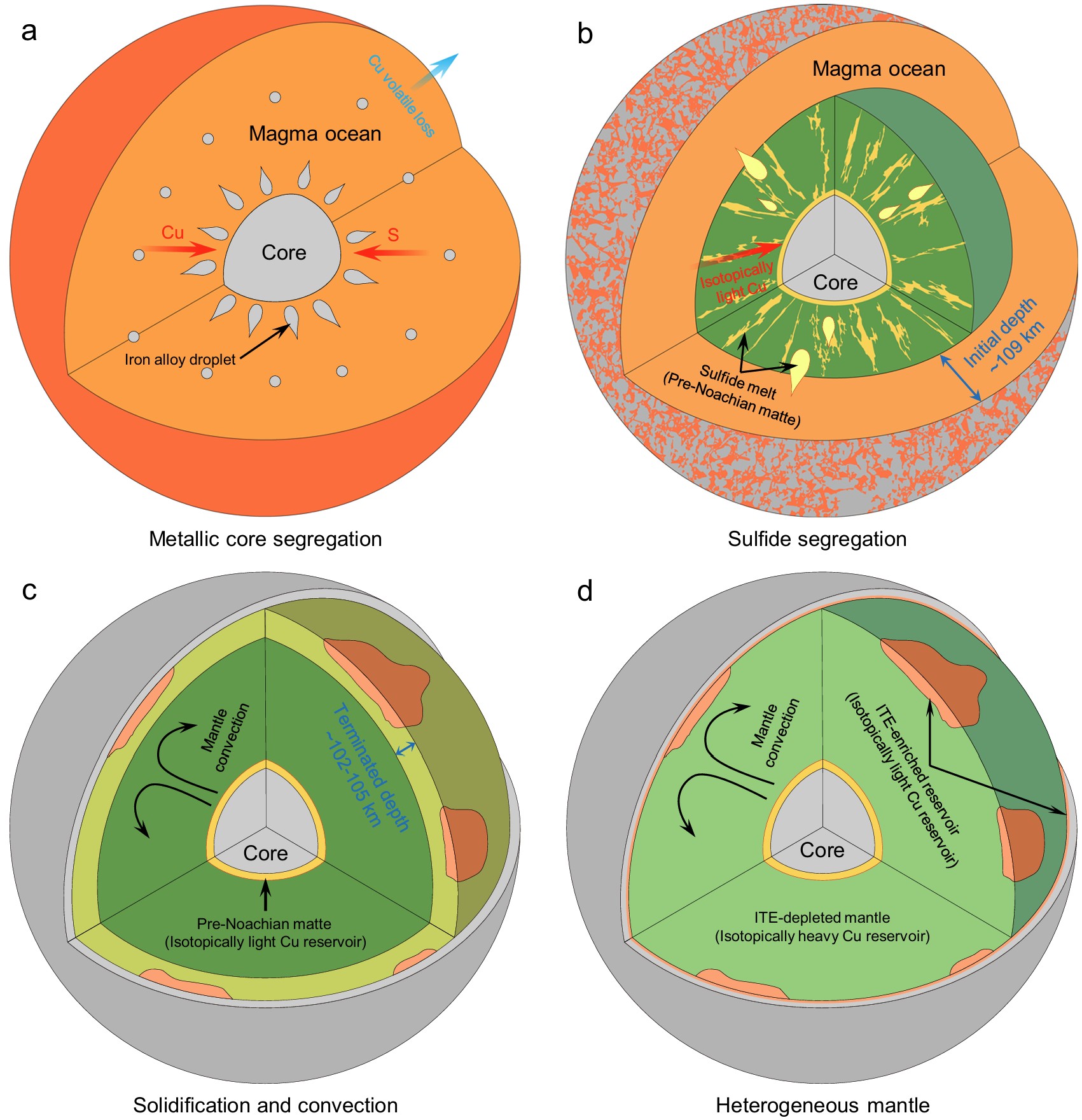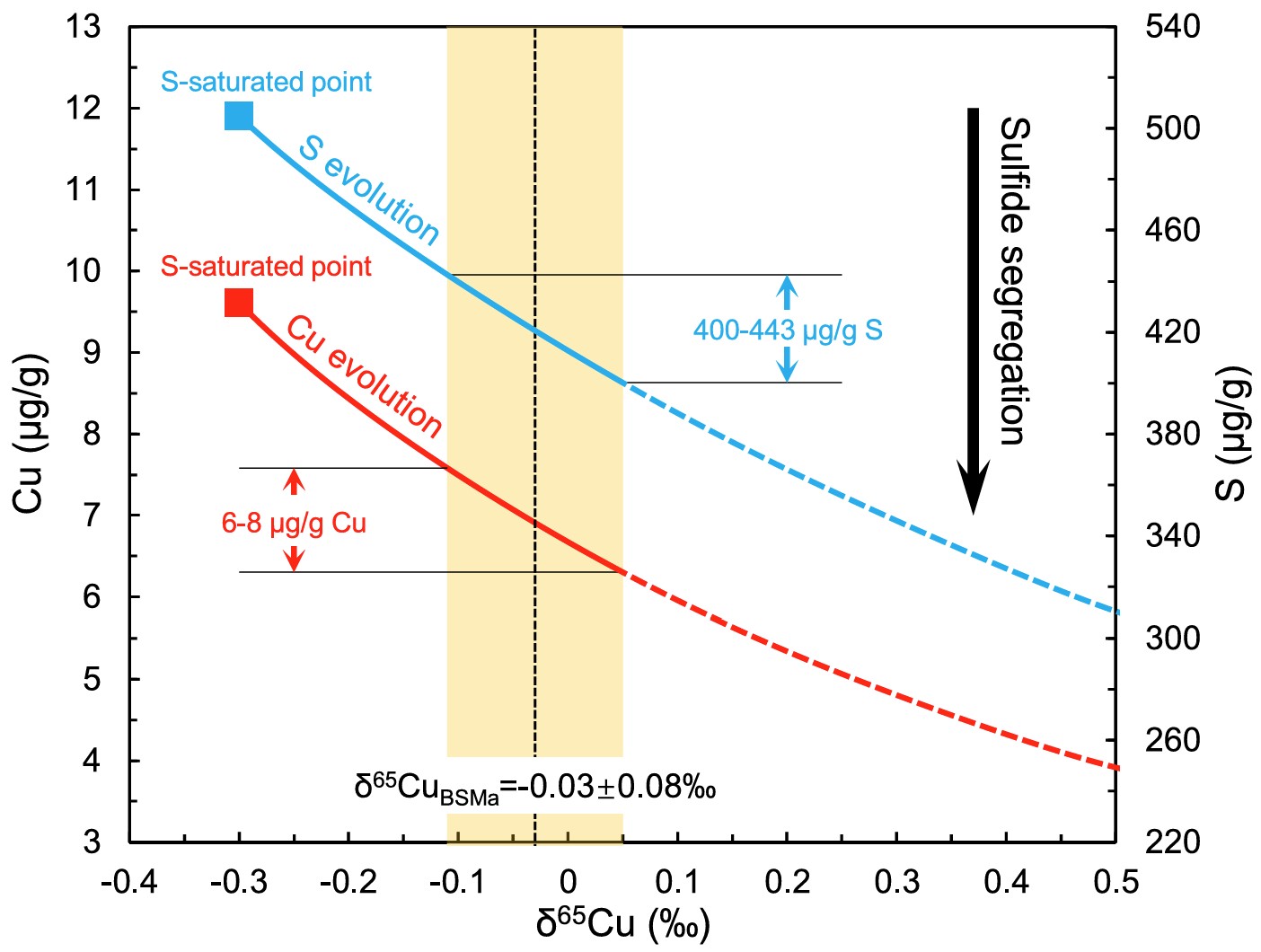
Planetary differentiation is a key process shaping the internal structure and evolutionary history of terrestrial planets. During this process, sulfide segregation in the magma ocean stage directly controls the migration and distribution of chalcophile elements, a critical factor for understanding early planetary evolution. Yet, its efficiency on Mars remains poorly constrained.
A research team from the Institute of Geochemistry of the Chinese Academy of Sciences (IGCAS), working with collaborators, has conducted whole-rock copper isotope analysis on 13 shergottite and two nakhlite samples. Their findings were recently published in Nature Communications.
Using major and trace element data, the team identified eight shergottites that represent the martian mantle's copper isotope composition. This allowed them to define the bulk silicate Mars' copper isotope composition as δ65Cu = -0.03 ± 0.08‰ (relative to NIST 976). Notably, this value is heavier than the initial martian value estimated from chondrites (-0.30 ± 0.09‰), indicating significant copper isotope fractionation during Mars' evolution.
The study developed a two-stage core formation model. Starting with martian chondritic building blocks, the model first simulated how sulfur and copper partitioned, as well as copper isotopic fractionation, during metal core segregation. The moderately volatile element potassium was used to assess how volatile loss impacted copper content and isotopic composition.
Next, the team used thermodynamic software (alphaMELTS 1.9) to model major element evolution during martian magma ocean crystallization. Combining this with a parameterization model for sulfur content at sulfide saturation (SCSS), they determined when sulfide melt exsolution occurred. Results show sulfide saturation took place when the magma ocean reached ~89% crystallization, triggering sulfide melt formation that began migrating toward the core.
However, copper isotope constraints reveal that when the residual magma ocean shallowed to depths below approximately 102–105 km, the lower temperatures prevented sulfide melts from percolating downward. While sulfide melts formed in even shallower residual melt could still migrate downward, they failed to reach the core and instead became trapped in Martian silicate mantle. This mechanism enriched the silicate mantle with heavier copper isotopes, and the subsequent inefficient mantle convection further contributed to the formation of a heterogeneous martian mantle.
Using copper isotope constraints, the study estimates an upper limit for the martian mantle's sulfur abundance (400–443 μg/g) and corresponding copper abundance (6–8 μg/g). This sulfur-poor trait aligns with the sulfur-undersaturated evolutionary history commonly observed in martian igneous rocks.
This study marks the first time the copper isotope system has been applied to study martian core-mantle differentiation. It identifies sulfide segregation as the key mechanism controlling chalcophile element behavior in early martian history, offering a new perspective for understanding the formation and differentiation of terrestrial planets.

Schematic diagram of martian magma ocean evolution. (Image by IGCAS)

Covariation between Cu-S depletion and δ65Cu in residual melts (values converted to bulk silicate Mars averages). (Image by IGCAS)

86-10-68597521 (day)
86-10-68597289 (night)

52 Sanlihe Rd., Xicheng District,
Beijing, China (100864)

